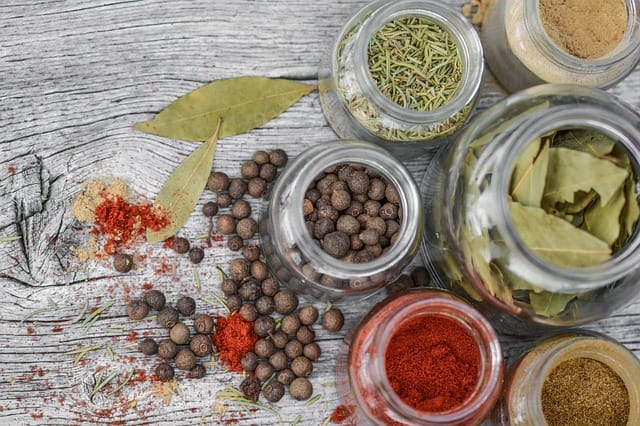How to grow Cumin
Cumin, scientifically known as Cuminum cyminum, is an aromatic herb that is widely used in cooking for its distinct flavor and medicinal properties

In this article:
- Introduction
- Choosing the Right Location
- Selecting the Best Cumin Variety
- Starting from Seeds or Transplants
- Preparing the Soil
- Planting and Spacing
- Watering and Irrigation
- Fertilizing the Cumin Plants
- Managing Pests and Diseases
- Harvesting Cumin Seeds
- Drying and Storing Cumin
- Culinary Uses of Cumin
- Common Mistakes to Avoid
- Frequently Asked Questions about Growing Cumin
- Conclusion
Introduction
Cumin, scientifically known as Cuminum cyminum, is an aromatic herb that is widely used in cooking for its distinct flavor and medicinal properties. Learning how to grow cumin at home can be a rewarding experience as it allows you to have a fresh supply of this versatile herb. In this guide, we will take you through the step-by-step process of growing cumin in your own garden.
Choosing the Right Location
Cumin plants require full sun, ideally for at least 6-8 hours a day, so choose a location in your garden that receives maximum sunlight. Cumin also prefers well-drained soil, so make sure the chosen spot has good drainage to prevent waterlogging.
Selecting the Best Cumin Variety
There are various cumin varieties available, so it's essential to choose one suitable for your region and growing conditions. Some popular varieties include Indian Cumin, Syrian Cumin, and Persian Cumin.
Starting from Seeds or Transplants
Cumin can be grown either from seeds or transplants. Starting from seeds is more common and cost-effective. Sow the seeds directly into the soil when the temperature consistently stays above 60°F (15°C). If you prefer transplants, start them indoors 4-6 weeks before the last frost date and transplant them into the garden when the soil is warm.
Preparing the Soil
Before planting the cumin seeds or transplants, prepare the soil by removing any weeds or debris and loosening it with a garden fork. Adding organic matter like compost or well-rotted manure can improve the soil's fertility and drainage.
Planting and Spacing
Sow the cumin seeds about 1/4 to 1/2 inch deep in the prepared soil. Leave a gap of 6-8 inches between each plant and maintain rows at least 18-24 inches apart. Cumin plants can reach a height of 12-24 inches, so make sure to provide enough space for them to grow comfortably.
Watering and Irrigation
Water the cumin plants regularly but avoid over-watering, as it can lead to root rot. Cumin plants require moderate moisture, so water them deeply once a week, ensuring the soil remains slightly moist but not waterlogged. Consider using a drip irrigation system to provide a slow, consistent water supply to the plants.
Fertilizing the Cumin Plants
Cumin plants benefit from a balanced fertilizer with equal amounts of nitrogen, phosphorus, and potassium. Apply a slow-release fertilizer or compost around the plants once they have grown a few inches tall. Avoid excessive use of nitrogen-based fertilizers, as they can promote excessive foliage growth at the expense of seed production.
Managing Pests and Diseases
Cumin plants are relatively pest and disease resistant, but they can still be susceptible to certain issues. Common pests that may attack cumin include aphids, spider mites, and whiteflies. Use organic insecticides or neem oil to control these pests. Ensure proper crop rotation and good air circulation to prevent diseases like powdery mildew or damping-off.
Harvesting Cumin Seeds
Cumin seeds are ready for harvest when the plant's foliage turns brown and begins to dry out. Cut the stems just above the soil level and gather them in bunches. Hang the bunches upside down in a warm, well-ventilated area to continue drying.
Drying and Storing Cumin
Dry the harvested cumin plants by removing the seeds from the stems once they are completely dry. Spread the seeds in a single layer on a clean cloth or paper towel and let them air dry for a few weeks. Store the dried cumin seeds in an airtight container in a cool, dark place to preserve their flavor and aroma.
Culinary Uses of Cumin
Cumin seeds have a warm, earthy flavor and are widely used in various cuisines around the world. They are commonly used in Indian, Middle Eastern, and Mexican dishes. Cumin can be used as a spice for seasoning curries, stews, soups, and rice dishes. It can also be dry roasted and ground into a powder or used whole in pickles and chutneys.
Common Mistakes to Avoid
When growing cumin, avoid these common mistakes:
- Overwatering the plants, leading to root rot.
- Planting cumin in poorly-drained soil.
- Using excessive amounts of nitrogen fertilizer.
- Not allowing enough space for the cumin plants to grow.
- Not providing sufficient sunlight.
Frequently Asked Questions about Growing Cumin
Q: How long does it take for cumin plants to mature?
A: Cumin plants typically take around 100-120 days from planting to harvest.
Q: Can I grow cumin in containers?
A: Yes, cumin can be grown in containers as long as they are large enough to accommodate the plant's root system.
Q: Can I save seeds from my cumin plants for the next season?
A: Yes, you can save seeds from your cumin plants for the next season by allowing the seed heads to fully dry on the plant, then collecting and storing the seeds in a dry place.
Conclusion
Growing cumin at home is a rewarding and relatively easy endeavor. By following the steps outlined in this guide, you can cultivate healthy cumin plants, enjoy the benefits of fresh cumin in your cooking, and even save seeds for future plantings. Start your cumin garden today and elevate your culinary experience with this flavorful herb!
